You’ve purchased figurines of all your favorite magical girls and RPG action heroes. Now what do you do with them?
Learning to keep your figurines dust-free and protected from the elements is just as important as choosing how to display them. It can seem like a daunting task at first, but with a few household and store-bought items to aid you, you can make your collection shine!
Deciding what kind of figurine display case to go for
Having a proper display can make a huge difference in how professional, cool, or homey your collection looks. While there are many creative methods for showing off your collection, these are the top three we recommend:
Bookshelves
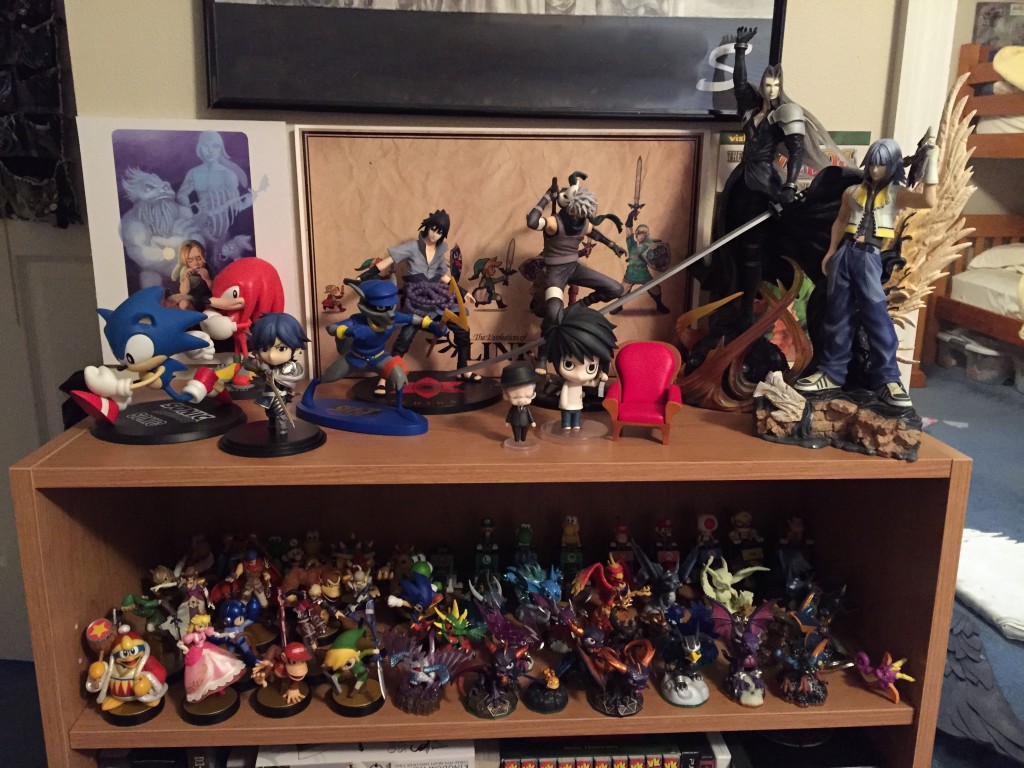
Bookshelves come in all shapes and sizes, meaning that you can easily find one that suits the shape of your room. Because they have multiple shelves—often adjustable—you’ll have plenty of layers available, allowing you to group your collection by series, character, or manufacturer. Bookshelves are perfect for a collector on a budget who’s looking for an attractive way to show off their figurines.
The only two downsides to bookshelves is that they are much more open to dust (we’ll talk about that in a moment), and that deep or low-to-the-ground bookshelves can sometimes conceal figurines placed in certain locations.
Walls and Peg Board

This method is mainly for displaying figurines that are still in their boxes, though it can be used—to some extent—for opened figurines as well.
The trick is to nail or thumbtack the backboard of the figurine box to a wall or thick board (we recommend peg board, since it already has holes in it). If you don’t want to “hole up” your walls, then you can either nail the peg board to the wall on a wooden frame (minimizing the number of holes necessary), or purchase a couple two-legged supports to set the peg board in so that it can free-stand. Some hardware and specialty stores sell peg boards already in the free-standing state.
If you wish to display your opened figurines on peg board, you can put a couple nails underneath the figurines’ “armpits” to hold them on either side. This display method typically only works for articulated figurines, however, and doesn’t allow for many dynamic poses or displays with props, weapons, etc.
Glass Cabinets
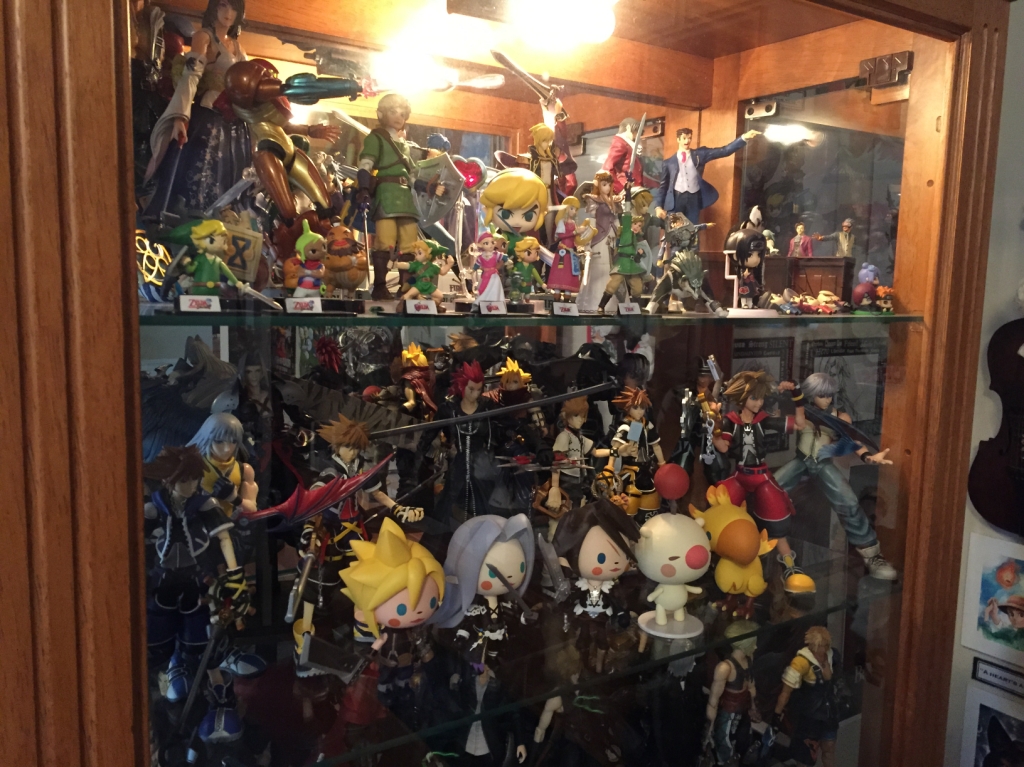
This is the most highly recommended method for displaying figurines. Glass cabinets are not only professional and clean-looking, but they also keep your figurines more protected from dust, dirt, and other damaging substances. Many cabinets have mirrors installed in the backs, allowing for a full 360-degree view of your collection, and some cabinets even have lighting to emphasize every feature of your detailed figurines.
The only downside to cabinets is that they can be expensive—much more expensive than a bookshelf or pegboard display. However, if you plan to collect seriously or long-term, the investment is well worth it, as it will better protect your figurines, and thus save you time cleaning and caring for them.
How to Protect Figurines: the Five Enemies of your Collection
When displaying and handling your figurines, keep in mind the five natural enemies of your collection: dust, dirt/grime, sunlight, heat, and moisture. Here’s why these substances are damaging and how you can avoid them:
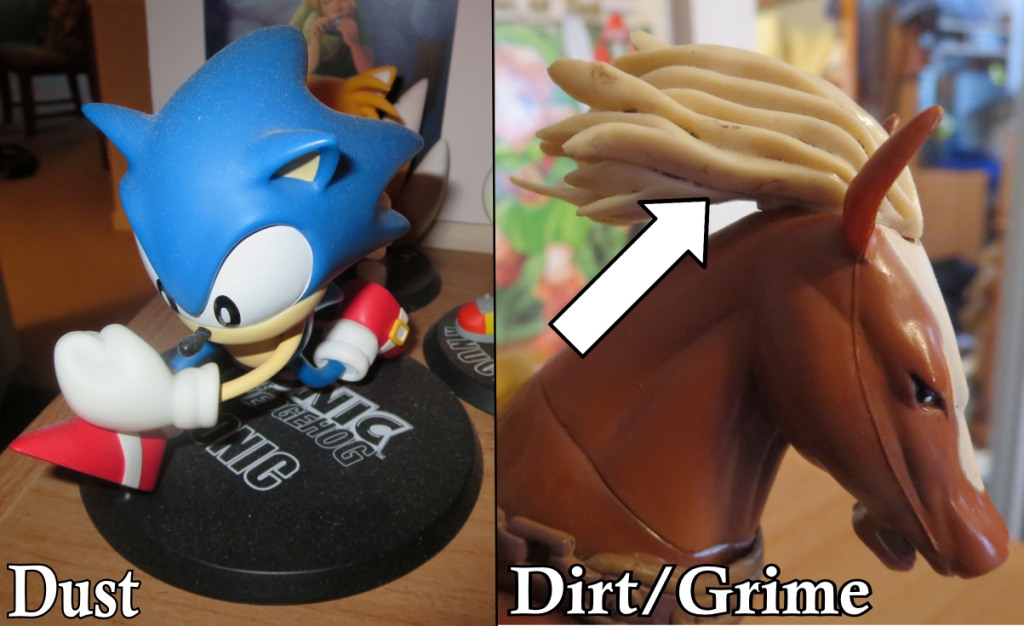
Dust
Fortunately, dust is the least damaging of the five. If left for an unordinary amount of time without care (think years and years), dust may begin to “cake” onto your figurines, making it hard to remove. However, dust is mostly troublesome just because it can make a collection look “dull.” Displaying your figurines in a closed cabinet or in their boxes can help keep the dust at bay. See the next section for ways to remove dust effectively!
Dirt/Oils
Always wash your hands before handling or cleaning your figurines. The natural oil of your skin, and any dirt or dust on your fingertips, can cause your collection to get grimy and gross. Avoid touching or handling your figurines on a daily basis, or else they may develop a “gently used” appearance.

Sunlight
Keep your figurines displayed out of natural lighting. Sunlight can cause your figurines’ colors to fade or become spotty. Avoid placing your figurines under windows where natural light pours through.
Heat
Most all figurines, especially those made of PVC, will become warped or bent when faced with heat. In more extreme cases, figurines’ sculpts may become “sticky” or “bubbly,” as a result. Keeping your figurines out of direct sunlight helps solve this problem, but watch out for certain types of light bulbs as well if you are displaying your figurines in a lighted glass cabinet. LED lights will provide sufficient light without heating up your precious collection, so be sure to use those kinds of lights only!
Moisture
If your figurines ever get wet, be sure to dry them thoroughly. Long-term contact with moisture can cause figurines to lose their paint and decals, and even make them develop weak joints, leading to articulation problems.
How to Clean Figurines: Basic 101 for your Collection
Dusting

Dusting is the most common method of cleaning you’ll use. Your collection and its display should be cleared of dust at least once a month, but once every two weeks is ideal. Here are the best tools for dusting:
Swiffer Duster:
A hand-sized Swiffer duster has multiple folds and can get into crevices and curves that a regular cloth or duster can’t. Many collectors use them to effortlessly clean up their figurines and swipe the dust free of their displays. Additionally, Swiffer dusters don’t just brush dust aside, they absorb it, meaning you’re getting rid of that dust on your collection for good.
Canned Air:
Also known as a “gas duster,” canned air is the best way to get dust out of tight, adjoining spaces—places that your Swiffer duster won’t reach. Simply spray a bit of canned air into the crevice to blast the dust free and keep it from caking up where you don’t want it. Note that canned air doesn’t get rid of dust, but simply loosens it and “blasts” it away from where it isn’t wanted. Use a Swiffer duster to clean up the rest. (And be sure to follow the instructions on the can!)
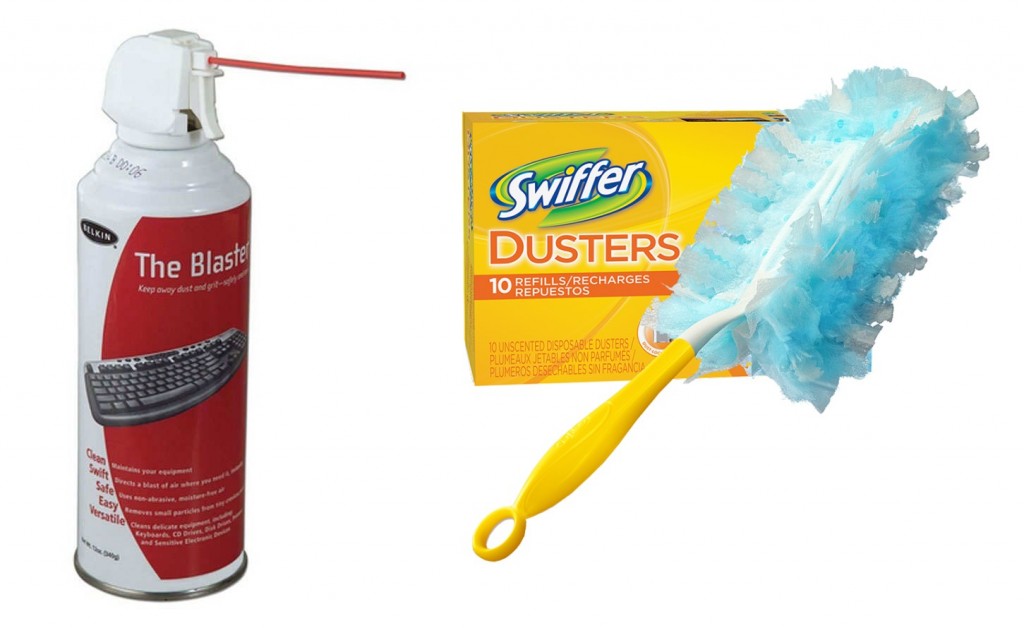
If you don’t have access to or funds for these items, a soft, clean cloth can work less efficiently as a “Swiffer duster.” You can also blow sharp breaths of air into the hard-to-reach crevices of your figurines, but be cautious not to get spittle on them (and be careful you don’t run out of breath!)
Washing

Sometimes regular dusting isn’t enough to keep wear and tear at bay. Maybe that used figurine you bought online or found at your local secondhand store is a bit dirty, or perhaps it’s just that time of year that your collection is due for a bath. Whatever the case, here’s the process we recommend for cleaning your figurines.
1. Fill a container with lukewarm water.
If the water is hot, it could warp your figurine, but warm water helps loosen the grime off of your figurine and kill the germs.
2. Optional: Disassemble your figurine.
If your figurine is one that comes apart, such as a Nendoroid, be sure to take it apart so that each of the individual pieces can be thoroughly cleaned.
3. Soak your figurine (or figurine pieces) in the water for about 5 minutes.
This helps loosen the grit and clear up any lingering dust.
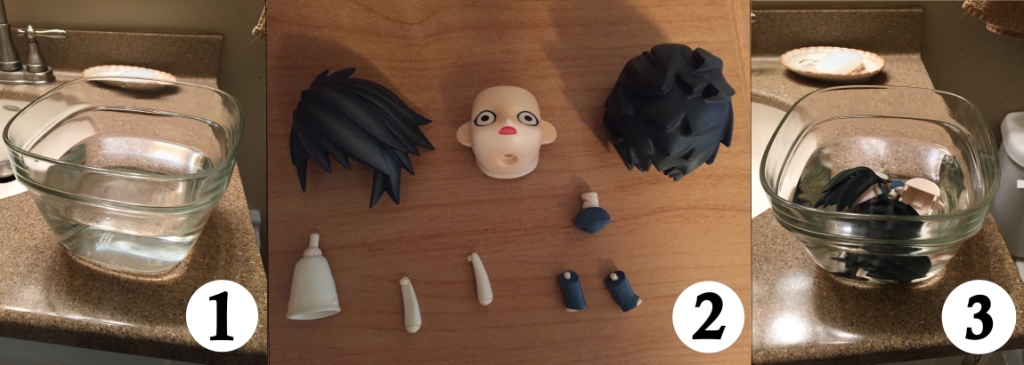
4. Squirt (or rub) soap on a new, soft-bristled toothbrush and begin gently brushing the figurine.
Don’t scrub too hard, as this could possibly rub off some of the figurine’s paint (especially if the figurine is older). Use a soap without moisturizer or scent to avoid leaving a greasy residue on the figurine. For especially dirty figurines, hold the figurines under the warm water in the container and scrub with the toothbrush.

5. Rinse all the soap off the figurine using warm water.
Don’t let soap dry on the figurine, as this will leave a residue.
6. Pat your figurine dry and then allow it to air dry.
Sponge up any excess water you can, and then let your figurine dry naturally. Do not lay your figurine out in the sun or use a hair dryer to “speed up” the process, as this can warp and damage your figurine.
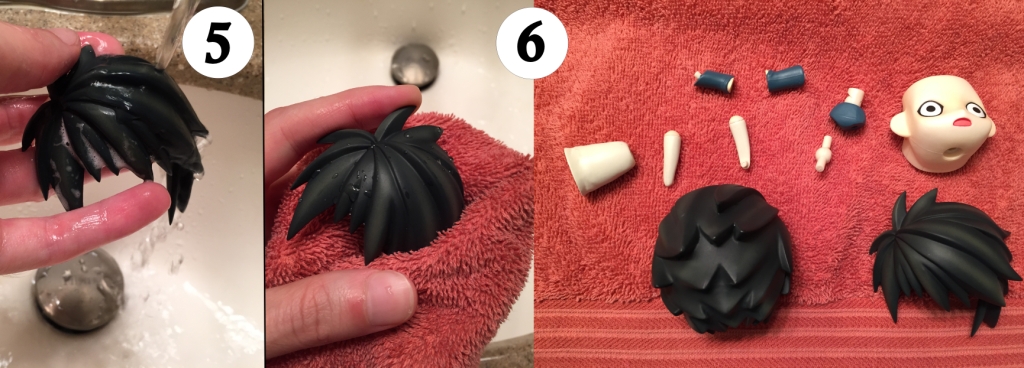
Other Methods
Not all figurines are suitable for the submersion wash method, either because they are too sensitive to be submerged or because they have stickers and other decals that could come off. In these cases, we recommend wetting and soaping a q-tip and wiping down the figurine. Q-tips are ideals because their size and shape allow for easy reach into details and crevices. You can use a toothbrush to similar effect.
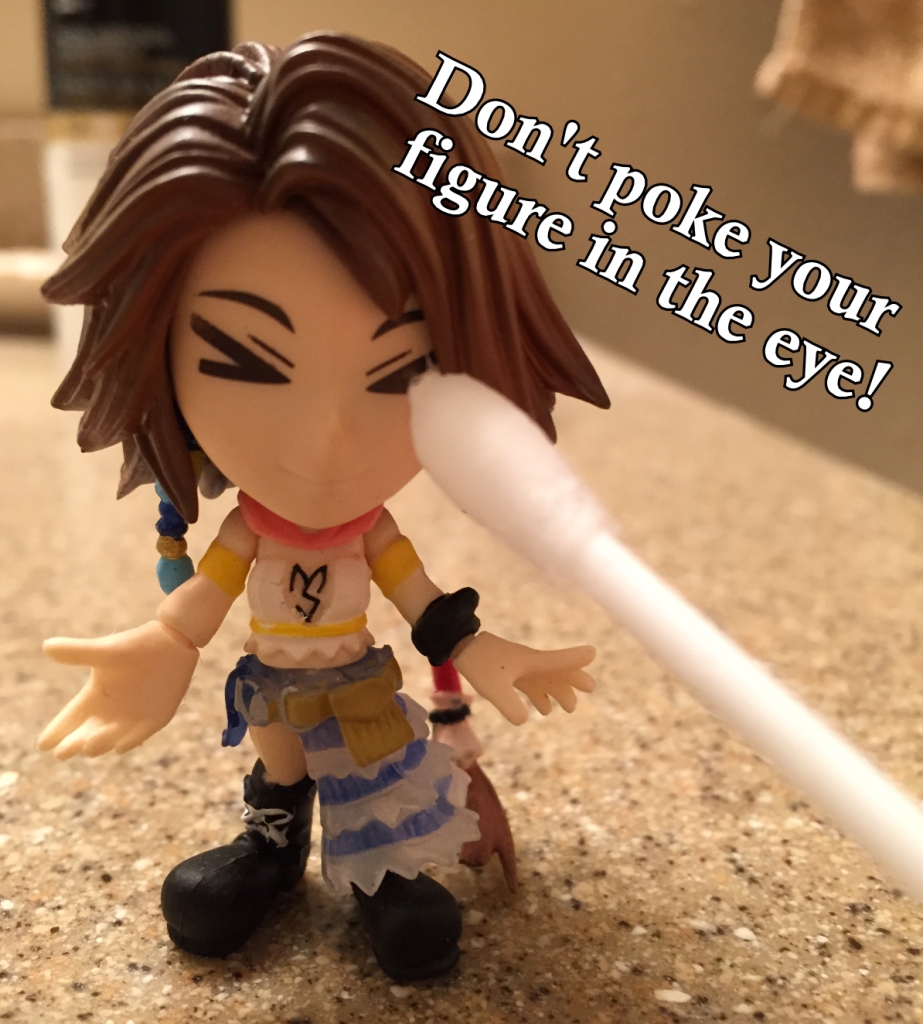
Where to Purchase Figurines: Expanding your Collection
Now that you know the basics of figurine care, it’s time to grow your collection… or even begin one of your very own. It can be tricky to acquire limited edition merchandise, but fortunately auction services like FROM JAPAN can help you locate the perfect figurine and get it delivered straight to your door!
Not sure which figurines to buy? Check out our picks for the top 10 figurine releases of spring and the top 14 figurine releases of summer. Whether you’re looking to collect Naruto figurines, super rare Dragon Ball figurines, or something else, FROM JAPAN can help you find it.


